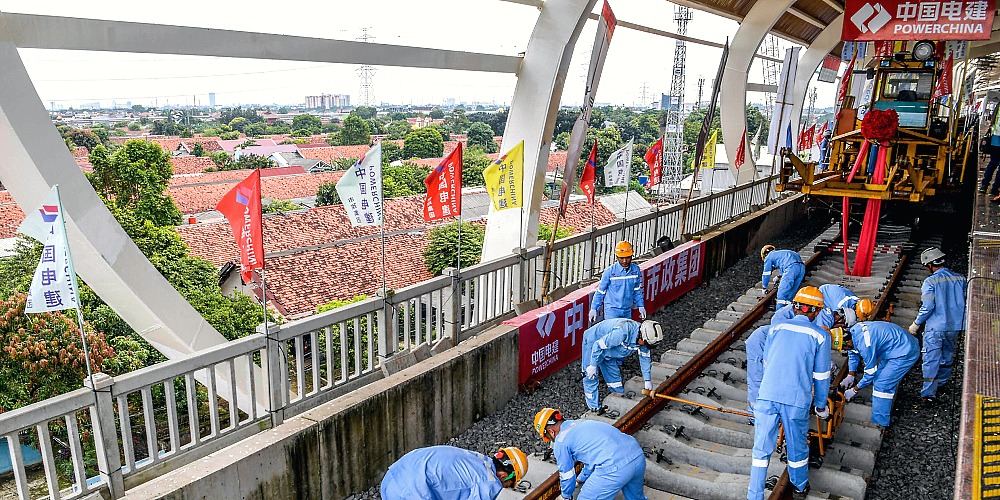China is the largest development financier in Southeast Asia, according to a recent study by Australian think tank the Lowy Institute, underscoring its importance as a partner for the economically focused Asean.
But despite its financial heft, Beijing is struggling to realize some of its bigger commitments, the Lowy study has found, as China competes with other key powers such as Japan and South Korea, both of which have proven their mettle as deep-pocketed and reliable lenders in a fast-growing region.
For Indonesia, China’s biggest benefactor and the region’s biggest aid recipient, Beijing’s development funds have translated into big projects such as the Jakarta-Bandung high-speed railway (HSR), but the project has suffered multiple delays and swelling costs.
The Lowy Institute’s Southeast Asia Aid Map collated data from between 2015 and 2021 and examined more than 100,000 projects across all Asean member states and Timor-Leste.
It also studied 97 development partners in the region, including traditional bilateral partners such as the United States, financial institutions such as the Asian Development Bank (ADB) and the World Bank, as well as non-traditional partners such as China, India and Middle Eastern nations.
The study estimated that within the six-year period, Southeast Asia had received an average of US$28 billion a year, making for a total of $200 billion in official development financing (ODF).
And while 80 percent of the total development financing was funded by traditional development partners, China had cemented its place as the single largest financier.
Southeast Asia’s top three financiers in the period were China, which spent around $5.53 billion a year, the ADB ($4.49 billion) and the World Bank ($4.1 billion).
“Most of China’s financing is concentrated geographically on particular countries, including Indonesia as the region’s largest economy as well as [its] neighbors Laos and Cambodia,” the researchers wrote.
“The vast majority (85 percent) of China’s financing, as disbursed, takes the form of non-concessional loans from its two main policy banks: China Export Import Bank and China Development Bank.”

Looming concerns
Indonesia was the largest recipient of ODF in the region, the study found, having received $86.3 billion in aid commitments.
This represented 35 percent of all ODF in the region, although $13.4 billion had yet to be realized.
China, Indonesia’s largest partner, was responsible for 21 percent of its incoming ODF.
“China’s development financing in Indonesia was principally focused on infrastructure, with energy projects accounting for 45 percent of Beijing’s total disbursements in the country and 26 percent in the transport sector,” Lowy researchers said.
However, the study also found that Beijing was struggling to fulfill some of its larger commitments, as was the case in Malaysia and Thailand.
Malaysia, which only received 0.7 percent of the region’s development aid commitments in the period, would have had a higher proportion of China’s ODF if some of the projects in the country did not face delays.
Chinese mega projects such as the $12.7 billion East Coast Rail Link project in Malaysia and the $13.5 billion Thailand-China HSR have seen major delays and delivery issues, signaling a financing decline in recent years.
The US, on the other hand, has provided $1.1 billion a year on average, playing a smaller role in infrastructure financing with a clear preference for making its larger disbursements in the form of grants.
Analysts suggested that China should be considered a “new investor” given its status as a recently wealthy nation and that some difficulties in realizing larger commitments were to be expected.
Compared to “old investors” such as the US and Japan, China would have to go through a learning curve before becoming a full-fledged quality investor, said Randy Rafitrandi, an economics researcher at the Center for Strategic and International Studies (CSIS), on Friday.
“We can see this in Malaysia’s railway case, for example. It has been delayed for a while, and they’re struggling with some technical aspects,” he told The Jakarta Post.
Similarly, in Indonesia, the Jakarta-Bandung HSR project has been under heavy scrutiny over major cost overruns and missed deadlines, on top of a deep-seated concern that Indonesia could fall into a Chinese “debt trap.”
It was important for Southeast Asian governments to carefully assess the risks before accepting major financial aid from Beijing, Randy cautioned.
“There is no such thing as an investment with no strings attached. There’s always a catch, some give and take. The government must be very clear in its risk assessment,” he said.
China has sought to ensure the success of the Jakarta-Bandung rail project and present it as an achievement of the decade-old Belt and Road Initiative (BRI), but consultants appointed by the state to oversee testing of the railway have recommended that its commercial operation date be delayed further, consultancy Tenggara Strategics reported.
President Joko “Jokowi” Widodo is scheduled to inaugurate the Jakarta-Bandung HSR on August 18, as part of celebrations for Indonesia’s 78th Independence Day. However, the project may not be able to keep to the deadline.
The Chinese Embassy in Jakarta was not immediately available for comment.
ADVERTISEMENT
ADVERTISEMENT








































